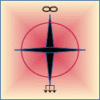Master the Present Moment
Introduction
Awareness is the cornerstone of human advancement. It allows us to navigate our environment, make informed decisions, and interact meaningfully with the world around us. From the survival instincts of our early ancestors to the complex cognition of modern life, awareness remains critical to reducing mental clutter, preserving bandwidth, and optimizing decision-making. By mastering the present moment and staying attuned to your surroundings, you can harness clarity and sharpen your focus in all areas of life.
The Bandwidth Connection
Awareness directly impacts bandwidth—the mental and emotional capacity required to function effectively. When awareness is fragmented by distractions, your bandwidth is depleted, leading to poor decision-making and reduced productivity. Conversely, cultivating awareness enhances clarity, enabling you to process information more efficiently, focus on priorities, and respond to challenges with greater composure. Awareness acts as a bandwidth amplifier, channeling your energy toward purposeful action.
Principles
Presence: Engage fully in the moment to reduce mental clutter and maximize clarity.
Observation: Notice details in your environment and interactions to gain valuable insights.
Focus: Direct your attention intentionally rather than letting it be dictated by distractions.
Adaptability: Use awareness to recognize and respond to changing circumstances.
Reflection: Cultivate self-awareness by examining your thoughts, emotions, and behaviors.
Strategies
Practice Mindfulness: Dedicate time daily to mindfulness or meditation to train your focus and presence.
Limit Distractions: Create environments conducive to concentration by minimizing interruptions.
Use Active Observation: Pay attention to sensory inputs, such as sights, sounds, and patterns, to deepen situational awareness.
Engage in Reflective Practices: Journal or reflect to enhance self-awareness and understand your mental states.
Pause Before Reacting: Take a moment to assess situations before responding to ensure thoughtful action.
Examples
Heightened Situational Awareness: A firefighter notices subtle changes in smoke patterns, enabling quick action to prevent escalation.
Mindful Decision-Making: A manager, practicing mindfulness, recognizes bias in their initial judgment and adjusts their approach to resolve a conflict effectively.
Personal Reflection: A professional journals about recurring stress triggers, gaining clarity to address them and reduce their impact on productivity.
Consequences
Positive: Cultivating awareness sharpens decision-making, improves emotional regulation, and enhances interpersonal interactions. It preserves bandwidth for high-value activities and reduces energy spent on distractions.
Negative: Neglecting awareness leads to fragmented attention, poor decisions, and unnecessary stress. Over time, it erodes mental clarity and diminishes your capacity for meaningful engagement.
Reflection Questions
What distractions in your daily life most often fragment your awareness?
How can you incorporate mindfulness into your routine to enhance focus?
Are there situations where a lack of awareness has led to unnecessary mistakes or stress?
How can you create environments or habits that support intentional awareness?
Closing Thought
Awareness is the foundation of clarity and purposeful action. By mastering the present moment and staying attuned to your environment, you enhance your bandwidth and optimize decision-making. Embrace awareness as a daily practice, and you will cultivate the focus, insight, and adaptability needed to navigate life’s complexities and opportunities.
